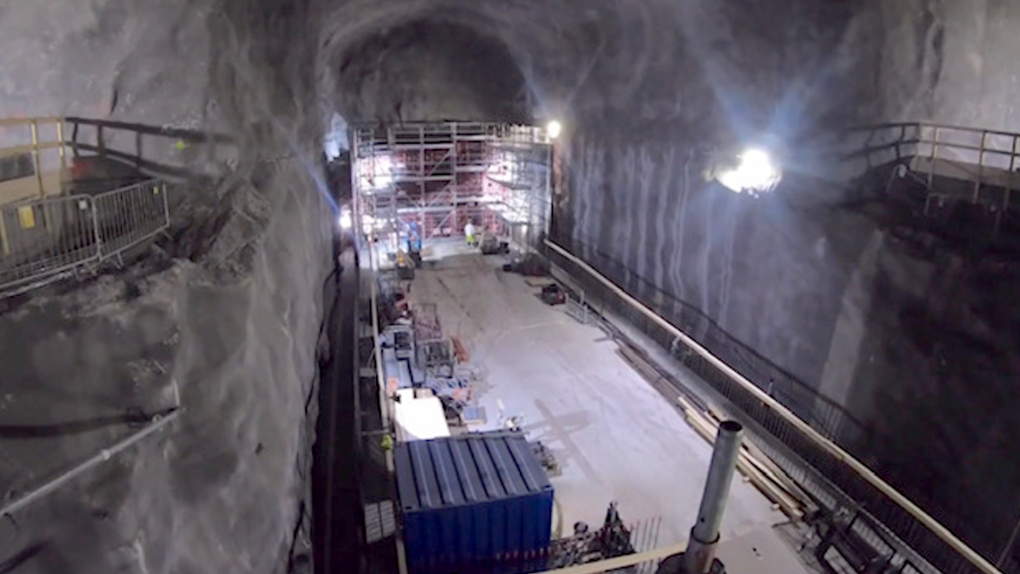South Bruce leaders heading to Finland for nuclear waste tour
This summer, Doug Culbert will be heading to Finland. Not for its fjords and food, but for an up-close look at the world’s first underground nuclear waste storage facility.
“I’m quite excited. This is an excellent opportunity for the municipality,” said the Teeswater, Ont. resident.
Culbert’s home community, the Municipality of South Bruce, is sending a total of 12 local councillors, town staff, and residents to Finland this July to tour the world’s first attempt at a permanent underground storage facility for used nuclear fuel.
That’s because all of Canada’s used nuclear fuel, 5.5 million bundles worth, could soon be buried under 1,500 acres of farmers' fields, north of Teeswater, in South Bruce.
“Truly understanding the scale, what the footprint looks like in the community. What it looks like indirectly through the community. Other jobs, and impacts to local businesses,” said Culbert.
Finland is the first country to build a Deep Geological Repository (DGR) for its used nuclear fuel. About 6,000 tonnes worth.
“The DGR has now been constructed, so that we can start operations. The first five demonstration tunnels where we put the canisters are in place already. We have also constructed the encapsulation plant on top of it,” said Tiina Jalonen of Posiva Oy. “That is where the spent nuclear fuel will be put into the canisters and then sent downstairs with the canister shaft.”
Posiva Oy is the Finnish equivalent to Canada’s Nuclear Waste Management Organization (NWMO). The NWMO is tasked with locating, constructing, and operating Canada’s DGR for high-level nuclear waste.
 The world’s first Deep Geological Repository to store used nuclear fuel under construction in Finland in November of 2022. (Source: Posiva Oy)
The world’s first Deep Geological Repository to store used nuclear fuel under construction in Finland in November of 2022. (Source: Posiva Oy)
According to the NWMO, Canada will have 106,000 tonnes of used nuclear fuel to bury when the country’s DGR is operational. That’s expected to happen by the year 2040.
“I have children here. Looking at the impact that will have on them, my neighbours, and future generations, and how can we help as the community of South Bruce, to solve this challenge as a nation,” said Culbert.
South Bruce isn’t the confirmed permanent home for Canada’s high-level nuclear waste, yet. The community has to vote on the proposed plan, as does the Saugeen Ojibway Nation.
There’s also a community in Northern Ontario still vying to host the $24 billion project.
The NWMO said they’ll decide which community will be become the permanent home to Canada’s high-level nuclear waste by the end of 2024.
CTVNews.ca Top Stories

Quebec fugitive killed in Mexican resort town, RCMP say
RCMP are confirming that a fugitive, Mathieu Belanger, wanted by Quebec provincial police has died in Mexico, in what local media are calling a murder.
Trump again calls to buy Greenland after eyeing Canada and the Panama Canal
First it was Canada, then the Panama Canal. Now, Donald Trump again wants Greenland. The president-elect is renewing unsuccessful calls he made during his first term for the U.S. to buy Greenland from Denmark, adding to the list of allied countries with which he's picking fights even before taking office.
Multiple OnlyFans accounts featured suspected child sex abuse, investigator reports
An experienced child exploitation investigator told Reuters he reported 26 accounts on the popular adults-only website OnlyFans to authorities, saying they appeared to contain sexual content featuring underage teen girls.
King Charles ends royal warrants for Ben & Jerry's owner Unilever and Cadbury chocolatiers
King Charles III has ended royal warrants for Cadbury and Unilever, which owns brands including Marmite and Ben & Jerry’s, in a blow to the household names.
DEVELOPING 'Serious safety issues': Edmonton building where security guard was killed evacuated
An apartment building where a security guard was killed earlier this month is being evacuated.
Santa Claus cleared for travel in Canadian airspace
Santa's sleigh has been cleared for travel in Canadian airspace, the federal government announced on Monday just ahead of the busy holiday season.
Ex-OpenAI engineer who raised legal concerns about the technology he helped build has died
Suchir Balaji, a former OpenAI engineer and whistleblower who helped train the artificial intelligence systems behind ChatGPT and later said he believed those practices violated copyright law, has died, according to his parents and San Francisco officials. He was 26.
U.S. House Ethics report finds evidence Matt Gaetz paid thousands for sex and drugs including paying a 17-year-old for sex in 2017
The U.S. House Ethics Committee found evidence that former Rep. Matt Gaetz paid tens of thousands of dollars to women for sex or drugs on at least 20 occasions, including paying a 17-year-old girl for sex in 2017, according to a final draft of the panel's report on the Florida Republican, obtained by CNN.
Young mammoth remains found nearly intact in Siberian permafrost
Researchers in Siberia are conducting tests on a juvenile mammoth whose remarkably well-preserved remains were discovered in thawing permafrost after more than 50,000 years.


































